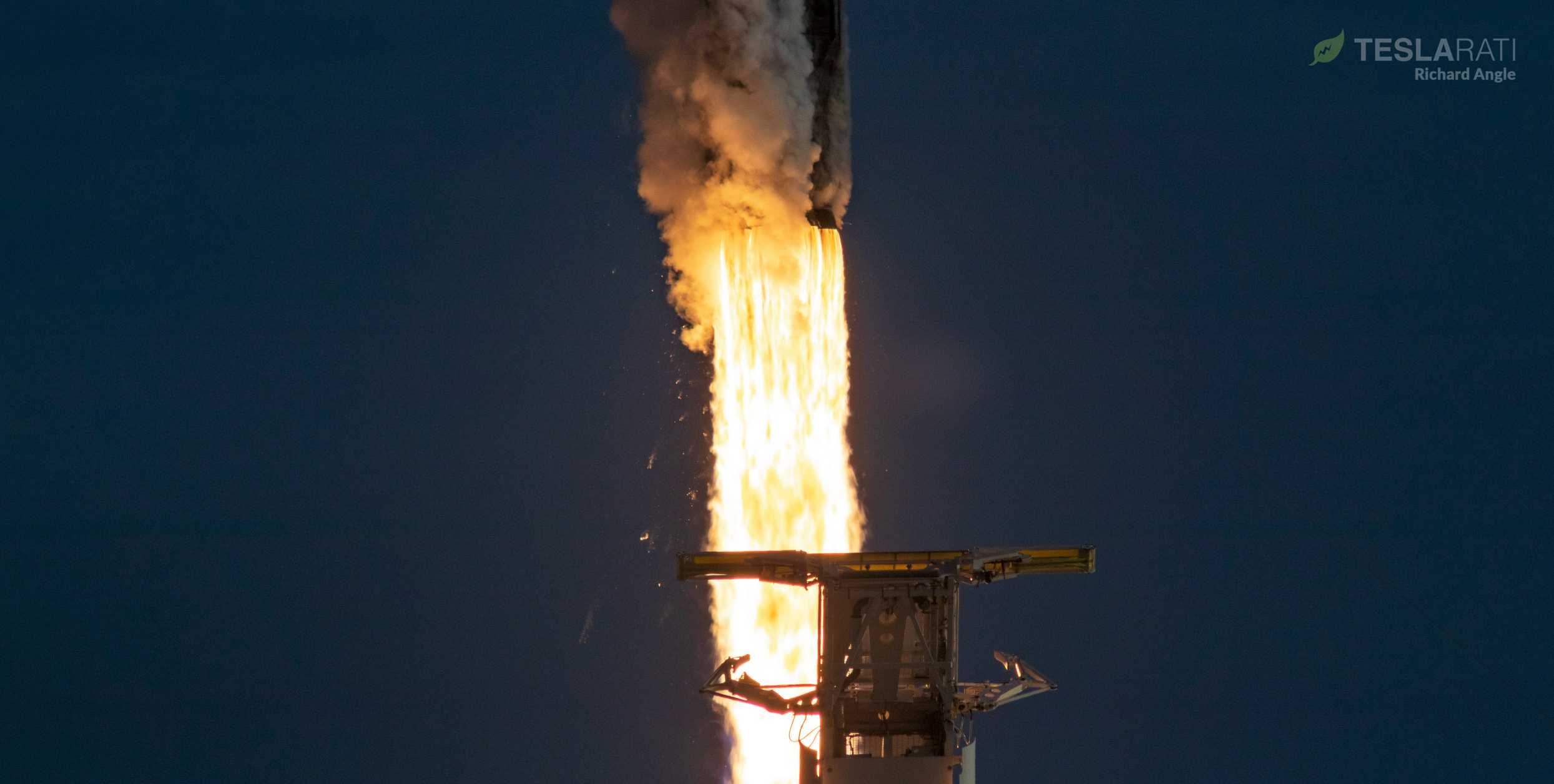
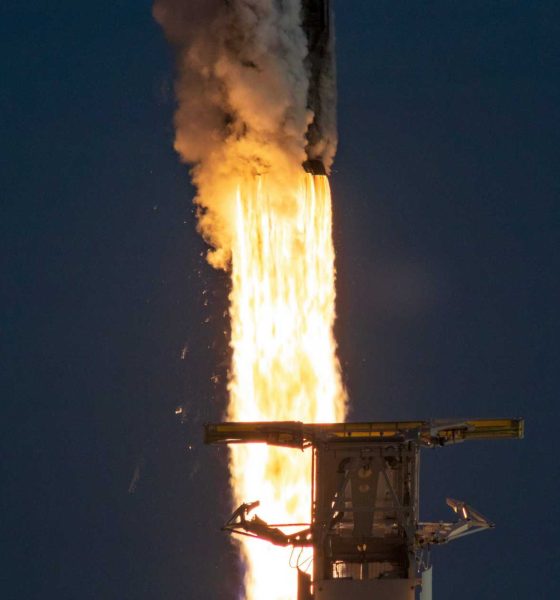
News
SpaceX loses record-breaking rocket booster after sixth successful Starlink launch
SpaceX has suffered its second rocket landing failure of 2020 despite the fact that both lost Falcon 9 boosters successfully launched 60 Starlink satellites, an anomaly that CEO Elon Musk says will need a “thorough investigation”.
After a rare last-second launch abort on March 15th and a three-day range-related delay, Falcon 9 booster B1048 lifted off with 60 upgraded Starlink v1.0 satellites on its fifth orbital-class mission. At least for the first two and half minutes, the booster performed precisely as intended, carrying a fueled upper stage and its ~16 metric ton (36,000 lb) payload to an altitude of 55 km (34 mi) and a velocity of 1.8 km/s (1.1 mi/s). However, about 10 seconds before the booster reached main engine cut-off (MECO) and stage separation, something went wrong.
While there is some ambiguity in his response, according to Musk, at least one of Falcon 9 B1048’s nine Merlin 1D engines performed an early shutdown before MECO. The rocket’s computer immediately accounted for the anomaly, extending the remaining eight-engine booster burn 5-7 seconds beyond the nominal timeline to ensure mission success. While the booster’s loss is still disappointing and the premature engine shutdown more than a little concerning, it’s critical to remember that mission success was ensured. Just 15 minutes after liftoff, the rocket’s upper stage successfully spun up and deployed another 60 Starlink satellites, bringing SpaceX’s operational constellation to an incredible ~350 satellites.
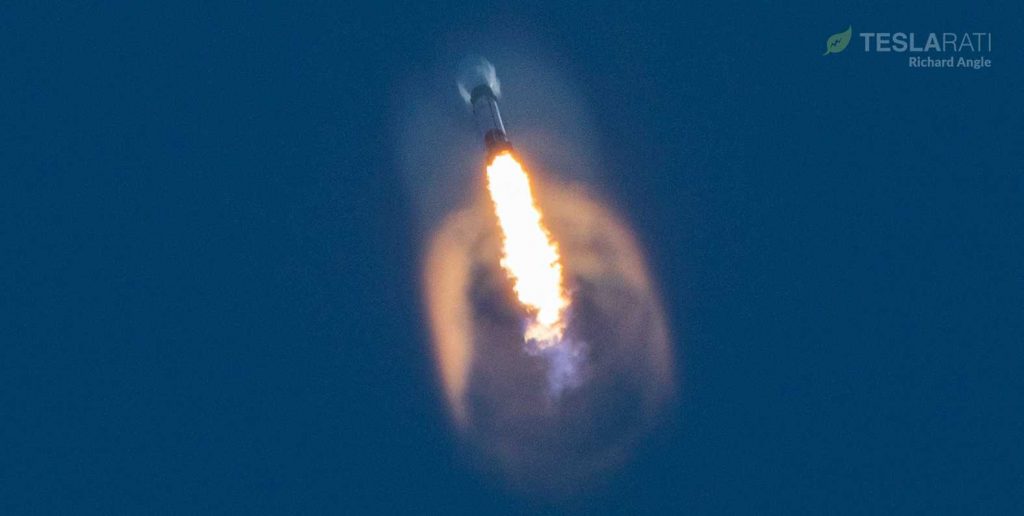
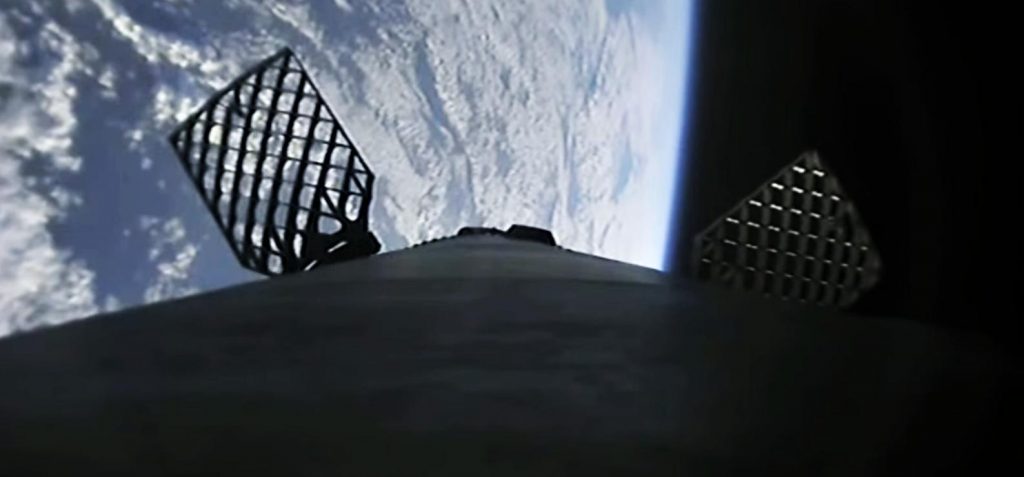
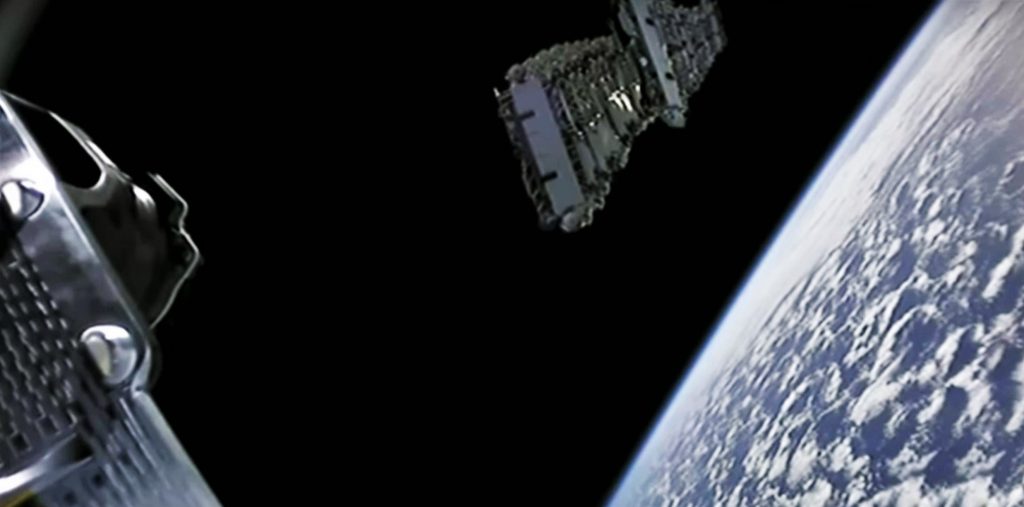
Based on live views available from SpaceX’s launch webcast, it appears that Falcon 9’s “early engine shutdown” is more of a euphemism for a fairly violent engine failure that triggered an instantaneous cutoff, preventing damage elsewhere. While SpaceX would certainly rather avoid in-flight engine failures, Falcon 9’s nine Merlin 1D booster engines are installed inside an aluminum ‘octaweb’ structure that transmits their thrust to the rest of the rocket but also effectively quarantines each engine in a blast-proof bunker.

Nevertheless, the rocket’s highly-attuned software and affected octaweb engine bunker did their jobs, instantly shutting the failing engine down while also preventing the explosion and resulting shrapnel from damaging the rest of the rocket. More likely than not, B1048’s autonomous decision to always put mission success before booster recovery lead the booster to expend a majority of the propellant needed for its landing attempt to make up for the 10 or so seconds operating at only ~89% thrust.
As a result, B1048 may have simultaneous subjected itself to a much more extreme atmospheric reentry and run out of propellant before it could complete (or maybe even start) its drone ship landing burn. There’s also a chance that the engine that failed was one of the three engines required for reentry and landing burns, an asymmetry that would be impossible to overcome on the fly. Ultimately, the booster likely impacted the ocean at a near-supersonic velocity, smashing it into aluminum confetti. Thankfully, the late B1048 had a record-breakingly productive career as an orbital-class booster, placing dozens of tons of payload into orbit over five successful launches. Its loss is regrettable but the booster has more than earned its keep.
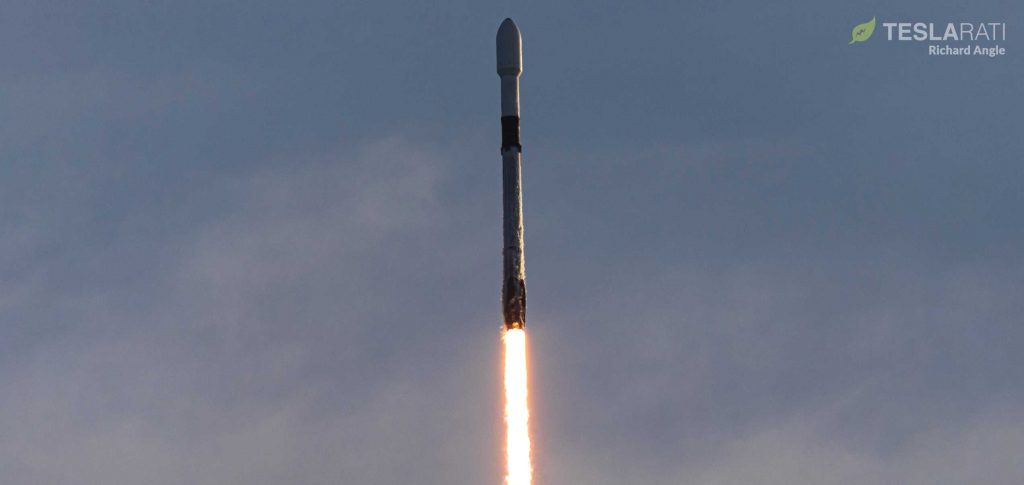
Aside from two twice-flown Falcon Heavy Block 5 side boosters of unknown status and 2-3 new boosters assigned to critical NASA and US Air Force missions, SpaceX’s fleet is now down to just three flightworthy Falcon 9 boosters. This could dramatically limit its options for near-term commercial flights, as none of those rockets – even assuming flawless launch and landing debuts – will likely be ready for their first reuses until May or June. Meanwhile, B1051 and B1049 have three and four missions under their respective belt and both completed their last launches just 50-70 days ago, while B1059 flew for the second time just two weeks ago. Despite the fact that it successfully completed its fifth mission, B1048’s in-flight engine failure will almost certainly delay upcoming launches, although the degree of those delays is up for debate.
Up next for SpaceX is SAOCOM 1B, an Argentinian radar satellite set to become the first payload launched into a polar orbit from the US East Coast in half a century. Before B1048’s anomaly, the mission was scheduled to launch no earlier than March 30th and could use any of unassigned boosters described above
Check out Teslarati’s Marketplace! We offer Tesla accessories, including for the Tesla Cybertruck and Tesla Model 3.

News
Tesla FSD fleet is nearing 7 billion total miles, including 2.5 billion city miles
As can be seen on Tesla’s official FSD webpage, vehicles equipped with the system have now navigated over 6.99 billion miles.

Tesla’s Full Self-Driving (Supervised) fleet is closing in on almost 7 billion total miles driven, as per data posted by the company on its official FSD webpage.
These figures hint at the massive scale of data fueling Tesla’s rapid FSD improvements, which have been quite notable as of late.
FSD mileage milestones
As can be seen on Tesla’s official FSD webpage, vehicles equipped with the system have now navigated over 6.99 billion miles. Tesla owner and avid FSD tester Whole Mars Catalog also shared a screenshot indicating that from the nearly 7 billion miles traveled by the FSD fleet, more than 2.5 billion miles were driven inside cities.
City miles are particularly valuable for complex urban scenarios like unprotected turns, pedestrian interactions, and traffic lights. This is also the difference-maker for FSD, as only complex solutions, such as Waymo’s self-driving taxis, operate similarly on inner-city streets. And even then, incidents such as the San Francisco blackouts have proven challenging for sensor-rich vehicles like Waymos.
Tesla’s data edge
Tesla has a number of advantages in the autonomous vehicle sector, one of which is the size of its fleet and the number of vehicles training FSD on real-world roads. Tesla’s nearly 7 billion FSD miles then allow the company to roll out updates that make its vehicles behave like they are being driven by experienced drivers, even if they are operating on their own.
So notable are Tesla’s improvements to FSD that NVIDIA Director of Robotics Jim Fan, after experiencing FSD v14, noted that the system is the first AI that passes what he described as a “Physical Turing Test.”
“Despite knowing exactly how robot learning works, I still find it magical watching the steering wheel turn by itself. First it feels surreal, next it becomes routine. Then, like the smartphone, taking it away actively hurts. This is how humanity gets rewired and glued to god-like technologies,” Fan wrote in a post on X.
News
Tesla starts showing how FSD will change lives in Europe
Local officials tested the system on narrow country roads and were impressed by FSD’s smooth, human-like driving, with some calling the service a game-changer for everyday life in areas that are far from urban centers.

Tesla has launched Europe’s first public shuttle service using Full Self-Driving (Supervised) in the rural Eifelkreis Bitburg-Prüm region of Germany, demonstrating how the technology can restore independence and mobility for people who struggle with limited transport options.
Local officials tested the system on narrow country roads and were impressed by FSD’s smooth, human-like driving, with some calling the service a game-changer for everyday life in areas that are far from urban centers.
Officials see real impact on rural residents
Arzfeld Mayor Johannes Kuhl and District Administrator Andreas Kruppert personally tested the Tesla shuttle service. This allowed them to see just how well FSD navigated winding lanes and rural roads confidently. Kruppert said, “Autonomous driving sounds like science fiction to many, but we simply see here that it works totally well in rural regions too.” Kuhl, for his part, also noted that FSD “feels like a very experienced driver.”
The pilot complements the area’s “Citizen Bus” program, which provides on-demand rides for elderly residents who can no longer drive themselves. Tesla Europe shared a video of a demonstration of the service, highlighting how FSD gives people their freedom back, even in places where public transport is not as prevalent.
What the Ministry for Economic Affairs and Transport says
Rhineland-Palatinate’s Minister Daniela Schmitt supported the project, praising the collaboration that made this “first of its kind in Europe” possible. As per the ministry, the rural rollout for the service shows FSD’s potential beyond major cities, and it delivers tangible benefits like grocery runs, doctor visits, and social connections for isolated residents.
“Reliable and flexible mobility is especially vital in rural areas. With the launch of a shuttle service using self-driving vehicles (FSD supervised) by Tesla in the Eifelkreis Bitburg-Prüm, an innovative pilot project is now getting underway that complements local community bus services. It is the first project of its kind in Europe.
“The result is a real gain for rural mobility: greater accessibility, more flexibility and tangible benefits for everyday life. A strong signal for innovation, cooperation and future-oriented mobility beyond urban centers,” the ministry wrote in a LinkedIn post.
News
Tesla China quietly posts Robotaxi-related job listing
Tesla China is currently seeking a Low Voltage Electrical Engineer to work on circuit board design for the company’s autonomous vehicles.

Tesla has posted a new job listing in Shanghai explicitly tied to its Robotaxi program, fueling speculation that the company is preparing to launch its dedicated autonomous ride-hailing service in China.
As noted in the listing, Tesla China is currently seeking a Low Voltage Electrical Engineer to work on circuit board design for the company’s autonomous vehicles.
Robotaxi-specific role
The listing, which was shared on social media platform X by industry watcher @tslaming, suggested that Tesla China is looking to fill the role urgently. The job listing itself specifically mentions that the person hired for the role will be working on the Low Voltage Hardware team, which would design the circuit boards that would serve as the nervous system of the Robotaxi.
Key tasks for the role, as indicated in the job listing, include collaboration with PCB layout, firmware, mechanical, program management, and validation teams, among other responsibilities. The role is based in Shanghai.
China Robotaxi launch
China represents a massive potential market for robotaxis, with its dense urban centers and supportive policies in select cities. Tesla has limited permission to roll out FSD in the country, though despite this, its vehicles have been hailed as among the best in the market when it comes to autonomous features. So far, at least, it appears that China supports Tesla’s FSD and Robotaxi rollout.
This was hinted at in November, when Tesla brought the Cybercab to the 8th China International Import Expo (CIIE) in Shanghai, marking the first time that the autonomous two-seater was brought to the Asia-Pacific region. The vehicle, despite not having a release date in China, received a significant amount of interest among the event’s attendees.








